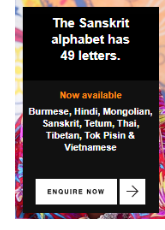If the world is to become safer from nuclear war, it must embrace gift basket diplomacy. For South Asia especially, moving past consensus-based negotiation is the only way forward, Amber Jamil writes.
In dealing with difficult negotiations the international community must embrace interest-based diplomacy and voluntary commitments, rather than banking entirely on achieving consensus.
A model that makes this possible, known as gift basket diplomacy, was demonstrated during the Nuclear Security Summits (NSS), held between 2010 and 2016 on the initiative of the United States, and replicated to success in climate talks in 2015. The use of gift basket diplomacy, as an alternative to consensus-based talks, became a key strategy in the NSS, and helped coalition-building progress beyond stalemates. The process of preparing voluntary targets in the lead-up to negotiations, or gift baskets, may be especially useful in South Asia, and could reduce nuclear risk and enhance crisis management efforts in the region. It could also improve collaboration on counterterrorism and border security.
Co-operation in nuclear security often advances through multi-party negotiations. These talks have far reaching implications for security and growth, but often involve states with disparate intentions and needs. This daunting complexity was present in the lead up to the first NSS in Washington, DC in 2010 as negotiators worked to overcome stumbling blocks created by binding agreements to achieve positive multilateral cooperation.
A central question for the 2016 NSS was the entry into force of the 2005 Amendment to the Convention on Physical Protection of Nuclear Material (CPPNM), a binding requirement for states to secure nuclear material as a sovereign responsibility. Negotiators sought to ratify the 2005 Amendment to CPPNM. Leading up to the summits, negotiators recognised that previous negotiation tactics, like those used to secure the signing of CPPNM, had run their course, and failed to meet desired outcomes in the longer-term.
In multiparty talks, if parties simply look out for themselves, the dominant strategy will be to free-ride the international system while others bear the cost of collective action.
On top of this, consensus-based rules allow spoilers to derail talks. To correct for these issues, NSS negotiations were structured to allow the emergence of gift basket diplomacy. States were asked to develop what voluntary commitments they were willing to offer in advance of the negotiations. These served as a baseline at the onset of the negotiation process.
Since in a normal multi-lateral negotiation, change by one party impacts decisions for others and outcomes can blur, the tactic of encouraging gift baskets enhanced communication and information sharing. This allowed states the flexibility to pursue their own preferred solutions and encouraged greater partnership.
Through NSS, more than fifty states with competing mandates, risk exposure, and access to resources, worked towards agreement on nuclear security. They overcame political and economic power imbalances which threatened to entrench positions at the expense of identifying shared interests, and effective coalitions building on collective interests.
These elements of the negotiation process built a sense of shared urgency, flexibility, and built confidence. It allowed the negotiations to close with the requisite numbers of states for entry into force of the landmark amended CPPNM, among other positive developments in nuclear security.
The outlook for South Asian nuclear security specifically improved when India and Pakistan’s participation in NSS led to the development of highly regarded Centers of Excellence (COEs) in partnership with the International Atomic Energy Agency.
The COEs present an opportunity to enhance technical co-operation and build on commitments to secure nuclear material. Possible arenas of co-operation may include the exchange of information on nuclear facilities, imagery information, remote monitoring and sensing, as well as site inspections. Future regional crisis management may be bolstered by the improved transparency, development of common equipment, and new operating procedures that come from co-operation. Gift basket diplomacy can also strengthen South Asian nuclear stability in other ways, such as by building co-operation on counter-terrorism and border security between India and Pakistan.
U nfortunately, without effective diplomacy, efforts to achieve such co-operation may not gain traction. Using gift baskets to achieve co-operation in South Asia may drive national plans to secure nuclear material and strengthen international instruments of nuclear security while establishing flexible, resilient policies based on the capacities and interests of each state. Additional negotiation tactics that may be useful in a gift basket framework include asking parties to state red lines in advance of talks.
nfortunately, without effective diplomacy, efforts to achieve such co-operation may not gain traction. Using gift baskets to achieve co-operation in South Asia may drive national plans to secure nuclear material and strengthen international instruments of nuclear security while establishing flexible, resilient policies based on the capacities and interests of each state. Additional negotiation tactics that may be useful in a gift basket framework include asking parties to state red lines in advance of talks.
To prevent talks from collapsing, mediators should also encourage parties to know their counterparts on a personal level, along with their interests and needs. This process can neutralise zero-sum approaches to negotiations. Non-government organisations (NGOs) may also play a critical role in ensuring policy pressure and public visibility during talks. Think tanks and universities can serve to lay the groundwork for dialogue that can contribute to real outcomes, helping crack South Asia’s historical stalemate.
In 2011, the NSS was key to the entry into force of the amended CPPNM and brought states into agreement based on historic, current, and future responsibilities. This success came because its negotiation process promoted cooperation where consensus was difficult. This approach must be replicated, in South Asia and beyond, if the region has hope for a peaceful future.





 How to build peace in South Asia
How to build peace in South Asia
 Same old South Asia
Same old South Asia